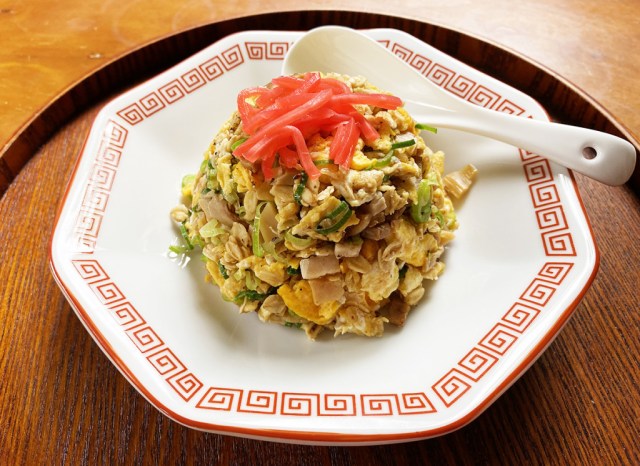
Fried rice without rice might sound like fried nothing, but our chef shows that nothing is impossible.
Our Japanese-language reporter Go Hatori has worn a lot of professional hats in his adult life. He spent a number of years working for one of the world’s largest IT companies for example, and even now he moonlights as a manga artist.
By comparison, the three years he spent working as a short-order cook were less glamorous, but it was still an important part of his life. In particular, he’s got fond memories of the restaurant’s owner teaching him how to make fried rice, and the other day he found himself craving its nostalgic flavor. There was just one problem: he didn’t have any rice in the kitchen.
Now, to most folks, not having any rice is a pretty major roadblock as far as making fried rice goes. Go, however, wasn’t going to give up so easily, and as he looked around his kitchen, his eyes fell on a container of oats.
Recently, Go’s been spending a lot of time imagining their potential uses beyond plain old oatmeal, and so he decided to find out if oats will work as a rice substitute for making fried rice.
His single-serving ingredients were:
● Oats (30 grams/1.1 ounces, approximately 5 tablespoons)
● Chashu pork (2 slices)
● Eggs (2)
● Menma/fermented bamboo shoots (35 grams/1.2 ounces)
● Green onions
● Vegetable oil
● Salt
● Pepper
● Aji no Moto-brand MSG
● Pickled ginger
Of course, as always with fried rice, you can really use whatever ingredients and seasonings you want, but that’s what Go’s restaurant boss taught him to use (except for the oats, that is).
Step 1
Slice the pork, bamboo shoots, and green onion
Step 2
Scoop the oats into a bowl (we’re going to use this bowl again later on, by the way)
Step 3
In a separate bowl, beat the eggs.
Step 4
Oil up a frying pan and turn on the heat to high.
Step 5
Once the pan is heated up, pour in the eggs. Right away, toss the oats in over them, and give everything a few good stirs as they start to cook.
Step 6
Add in the pork, bamboo shoots, and green onion and stir-fry everything together. While you’re at it, sprinkle in a dash of the seasonings, but not too much, since it’s the bamboo shoots and pork that are going to do the heavy lifting in terms of flavor.
Step 7
Remember how we said we were going to use that first bowl again? As a former professional cook, Go insists that presentation is important, so when the cooking is finished, transfer everything from the pan to the bowl and then, with a single swift flick of the wrist, flip it onto a plate, where the arrangement will have a mouthwatering sense of height to it (also, while it won’t affect the flavor, 99 percent of cooks in Japan will tell you that fried rice should, ideally, be served on an octagonal plate).
Step 8
Finally, garnish with pickled ginger to add some eye-catching color.
At the risk of bragging, Go has to say that he was thoroughly impressed at how much his fried oats looked like fried rice. But how do they taste?
Surprisingly close to fried rice! The gustatory resemblance isn’t quite as strong as the visual one, but since the rice itself is the mildest part of fried rice’s flavor profile, simply swapping in oats while leaving everything else the same means the other ingredients and seasonings are working just as well together as they usually do.
So in the end, fried oats really do get the job done, Go says, and if you happen to have some leftover tempura lying around, you could make them even better.
Photos ©SoraNews24
● Want to hear about SoraNews24’s latest articles as soon as they’re published? Follow us on Facebook and Twitter!
[ Read in Japanese ]


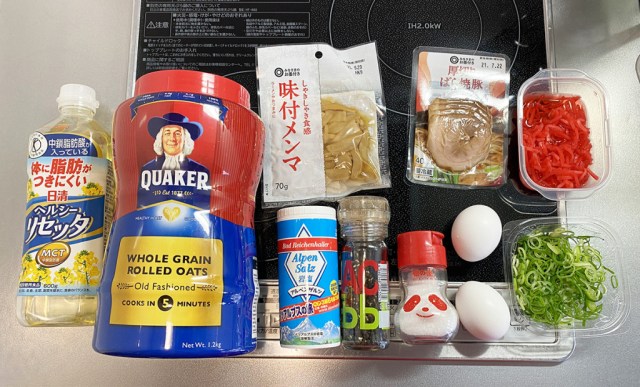
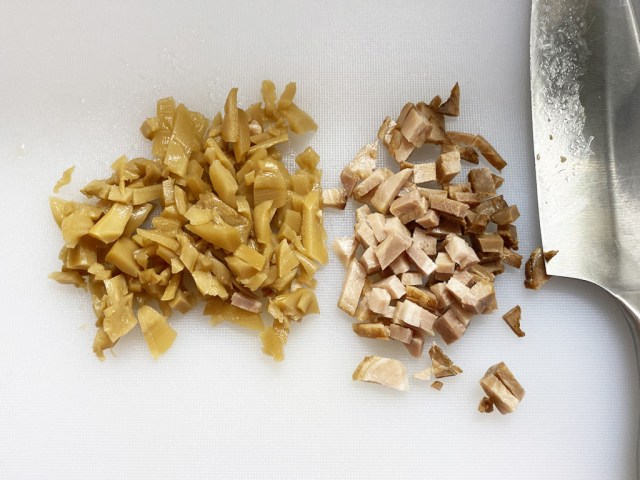
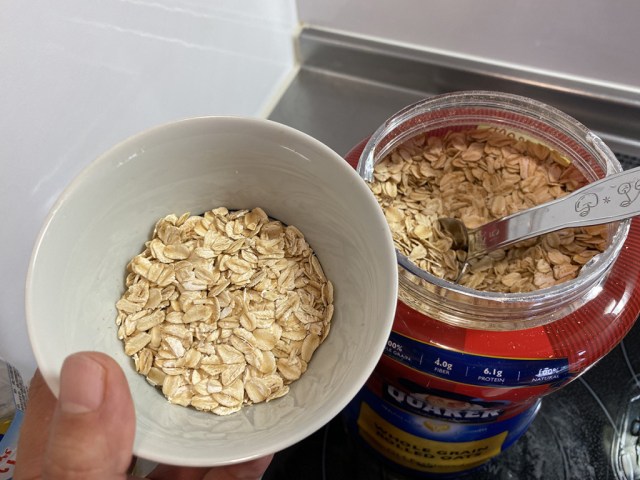
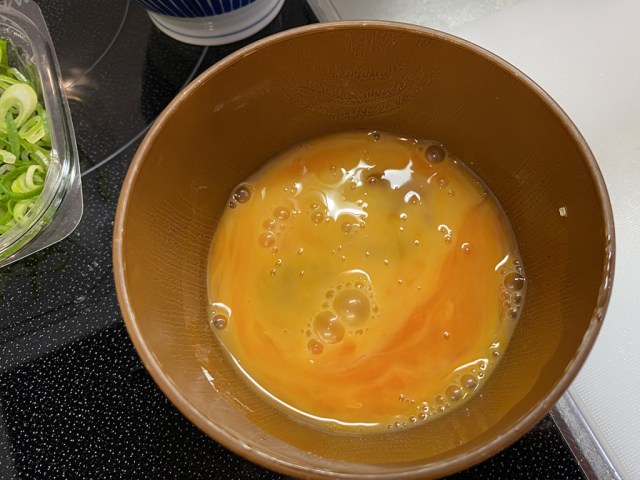
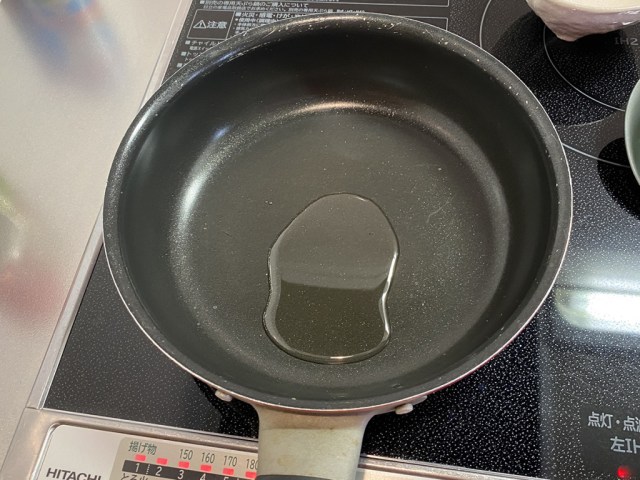
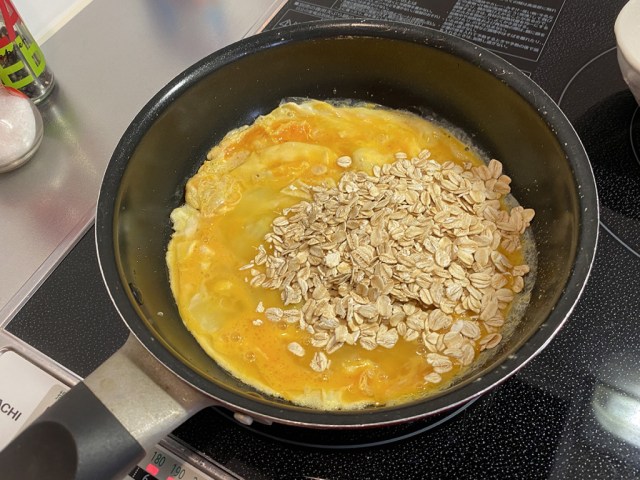
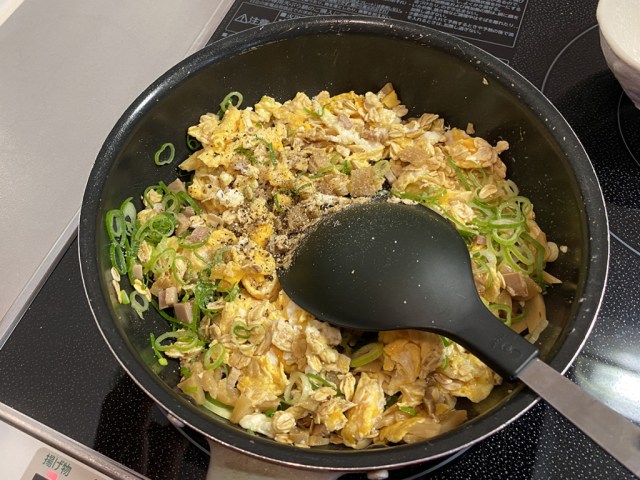
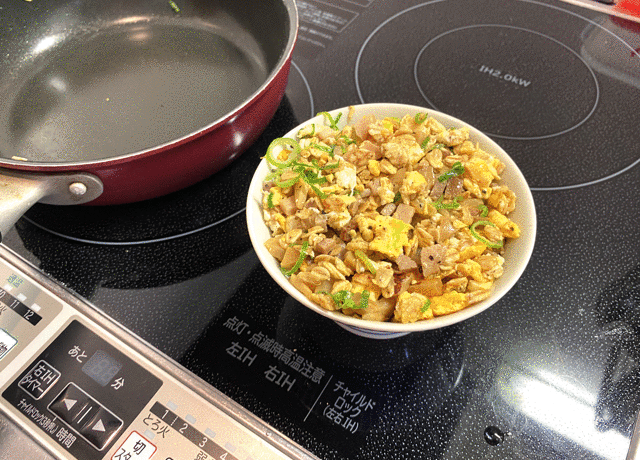
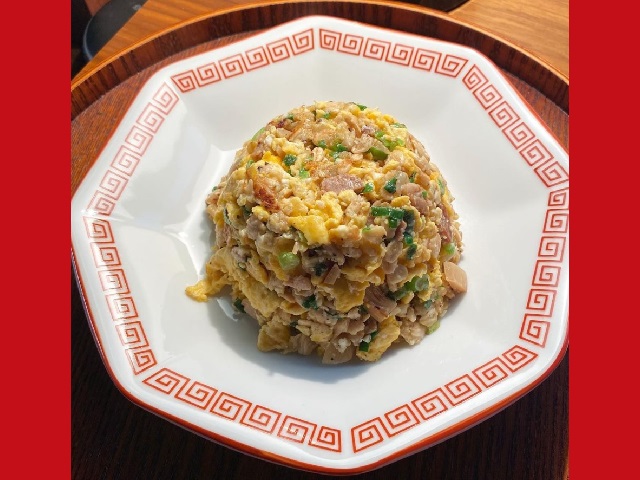
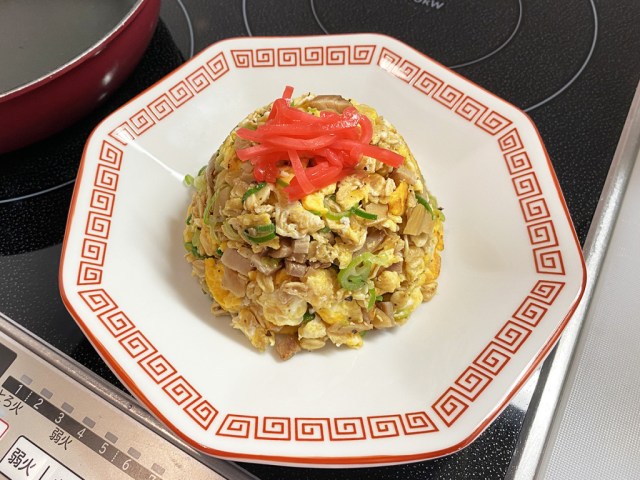
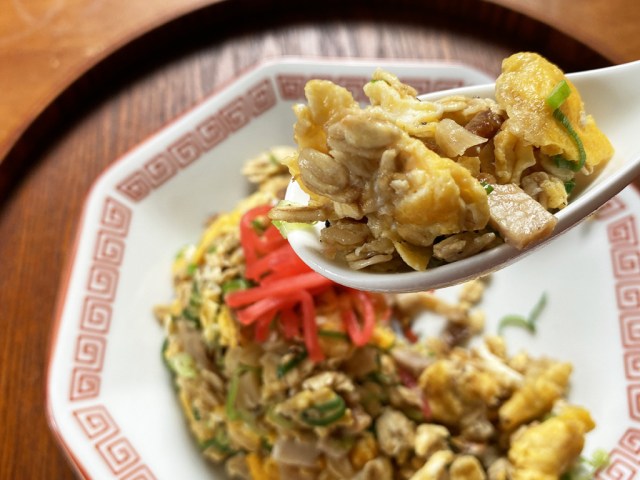
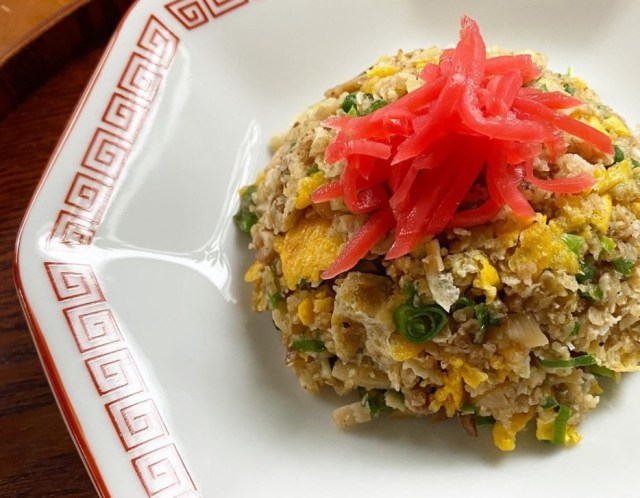
 How to make a “curry rice bowl” using instant oatmeal instead of rice 【SoraKitchen】
How to make a “curry rice bowl” using instant oatmeal instead of rice 【SoraKitchen】 Put a unique twist on your oatmeal by turning it into some Japanese comfort food
Put a unique twist on your oatmeal by turning it into some Japanese comfort food How to turn leftover tempura into fried rice (or why to buy all the takeout tempura you can)
How to turn leftover tempura into fried rice (or why to buy all the takeout tempura you can) Japan super budget dining – What’s the best way to spend 1,000 yen at Family Mart?
Japan super budget dining – What’s the best way to spend 1,000 yen at Family Mart? Japanese restaurant chain shows us how to make katsudon in three minutes【SoraKitchen】
Japanese restaurant chain shows us how to make katsudon in three minutes【SoraKitchen】 Tokyo Tsukiji fish market site to be redeveloped with 50,000-seat stadium, hotel, shopping center
Tokyo Tsukiji fish market site to be redeveloped with 50,000-seat stadium, hotel, shopping center Japanese ramen restaurants under pressure from new yen banknotes
Japanese ramen restaurants under pressure from new yen banknotes Red light district sushi restaurant in Tokyo shows us just how wrong we were about it
Red light district sushi restaurant in Tokyo shows us just how wrong we were about it French Fries Bread in Tokyo’s Shibuya becomes a hit on social media
French Fries Bread in Tokyo’s Shibuya becomes a hit on social media Pokémon Sleep camping suite and guestrooms coming to Tokyo Hyatt along with giant Snorlax burgers
Pokémon Sleep camping suite and guestrooms coming to Tokyo Hyatt along with giant Snorlax burgers McDonald’s new Happy Meals offer up cute and practical Sanrio lifestyle goods
McDonald’s new Happy Meals offer up cute and practical Sanrio lifestyle goods Beautiful Red and Blue Star luxury trains set to be Japan’s new Hokkaido travel stars
Beautiful Red and Blue Star luxury trains set to be Japan’s new Hokkaido travel stars Foreign English teachers in Japan pick their favorite Japanese-language phrases【Survey】
Foreign English teachers in Japan pick their favorite Japanese-language phrases【Survey】 New private rooms on Tokaido Shinkansen change the way we travel from Tokyo to Kyoto
New private rooms on Tokaido Shinkansen change the way we travel from Tokyo to Kyoto Japanese company starts project to restore Nakagin Capsules to capsule hotel
Japanese company starts project to restore Nakagin Capsules to capsule hotel All-you-can-drink Starbucks and amazing views part of Tokyo’s new 170 meter-high sky lounge
All-you-can-drink Starbucks and amazing views part of Tokyo’s new 170 meter-high sky lounge More foreign tourists than ever before in history visited Japan last month
More foreign tourists than ever before in history visited Japan last month Starbucks reopens at Shibuya Scramble Crossing with new look and design concept
Starbucks reopens at Shibuya Scramble Crossing with new look and design concept Studio Ghibli releases new action figures featuring Nausicaä of the Valley of the Wind characters
Studio Ghibli releases new action figures featuring Nausicaä of the Valley of the Wind characters Studio Ghibli glasses cases let anime characters keep an eye on your spectacles
Studio Ghibli glasses cases let anime characters keep an eye on your spectacles Is the new Shinkansen Train Desk ticket worth it?
Is the new Shinkansen Train Desk ticket worth it? Beautiful Ghibli sealing wax kits let you create accessories and elegant letter decorations【Pics】
Beautiful Ghibli sealing wax kits let you create accessories and elegant letter decorations【Pics】 Studio Ghibli releases Kiki’s Delivery Service chocolate cake pouches in Japan
Studio Ghibli releases Kiki’s Delivery Service chocolate cake pouches in Japan New definition of “Japanese whiskey” goes into effect to prevent fakes from fooling overseas buyers
New definition of “Japanese whiskey” goes into effect to prevent fakes from fooling overseas buyers Our Japanese reporter visits Costco in the U.S., finds super American and very Japanese things
Our Japanese reporter visits Costco in the U.S., finds super American and very Japanese things Studio Ghibli unveils Mother’s Day gift set that captures the love in My Neighbour Totoro
Studio Ghibli unveils Mother’s Day gift set that captures the love in My Neighbour Totoro Domino’s Japan now sells…pizza ears?
Domino’s Japan now sells…pizza ears? New Japanese KitKat flavour stars Sanrio characters, including Hello Kitty
New Japanese KitKat flavour stars Sanrio characters, including Hello Kitty New Pokémon cakes let you eat your way through Pikachu and all the Eevee evolutions
New Pokémon cakes let you eat your way through Pikachu and all the Eevee evolutions Sales of Japan’s most convenient train ticket/shopping payment cards suspended indefinitely
Sales of Japan’s most convenient train ticket/shopping payment cards suspended indefinitely Sold-out Studio Ghibli desktop humidifiers are back so Totoro can help you through the dry season
Sold-out Studio Ghibli desktop humidifiers are back so Totoro can help you through the dry season Japanese government to make first change to romanization spelling rules since the 1950s
Japanese government to make first change to romanization spelling rules since the 1950s Ghibli founders Toshio Suzuki and Hayao Miyazaki contribute to Japanese whisky Totoro label design
Ghibli founders Toshio Suzuki and Hayao Miyazaki contribute to Japanese whisky Totoro label design Doraemon found buried at sea as scene from 1993 anime becomes real life【Photos】
Doraemon found buried at sea as scene from 1993 anime becomes real life【Photos】 Tokyo’s most famous Starbucks is closed
Tokyo’s most famous Starbucks is closed One Piece characters’ nationalities revealed, but fans have mixed opinions
One Piece characters’ nationalities revealed, but fans have mixed opinions We asked a Uniqlo employee what four things we should buy and their suggestions didn’t disappoint
We asked a Uniqlo employee what four things we should buy and their suggestions didn’t disappoint Princesses, fruits, and blacksmiths: Study reveals the 30 most unusual family names in Japan
Princesses, fruits, and blacksmiths: Study reveals the 30 most unusual family names in Japan Japan super budget dining – What’s the best way to spend 1,000 yen at sushi restaurant Sushiro?
Japan super budget dining – What’s the best way to spend 1,000 yen at sushi restaurant Sushiro? How to make a mouth-watering Japanese beef bowl in just five minutes 【RocketKitchen】
How to make a mouth-watering Japanese beef bowl in just five minutes 【RocketKitchen】 This rare autumn vegetable is the perfect addition to your stir-fry or salad【SoraKitchen】
This rare autumn vegetable is the perfect addition to your stir-fry or salad【SoraKitchen】 Around Japan in 47 rice balls: Mr. Sato buys each prefecture’s musubi all from one Tokyo shop
Around Japan in 47 rice balls: Mr. Sato buys each prefecture’s musubi all from one Tokyo shop We tried cooking with a personal fryer and now we’re obsessed
We tried cooking with a personal fryer and now we’re obsessed Rice cooker cooking: Bacon onion rice is amazingly easy, awesomely delicious
Rice cooker cooking: Bacon onion rice is amazingly easy, awesomely delicious Yoshinoya has a semi-secret chicken bowl you won’t find anywhere on its website【Taste test】
Yoshinoya has a semi-secret chicken bowl you won’t find anywhere on its website【Taste test】 Got rice? The tastiest rice ever compels bread-fan Mr. Sato to eat more rice than ever before
Got rice? The tastiest rice ever compels bread-fan Mr. Sato to eat more rice than ever before We try out Pizza Hut Taiwan’s Ramen Pizza, try to figure out its national identity
We try out Pizza Hut Taiwan’s Ramen Pizza, try to figure out its national identity This amazing Weipa recipe tastes every bit like fried rice without frying rice
This amazing Weipa recipe tastes every bit like fried rice without frying rice This super easy cold Korean spicy ramen dish will make summer 100 times more delicious
This super easy cold Korean spicy ramen dish will make summer 100 times more delicious This pork-wrapped Japanese dessert recipe is outside the box and out of this world【Recipe】
This pork-wrapped Japanese dessert recipe is outside the box and out of this world【Recipe】 Making spicy instant ramen fried rice, Korea’s latest viral food trend【SoraKitchen】
Making spicy instant ramen fried rice, Korea’s latest viral food trend【SoraKitchen】 Does Tokyo’s King of Tonkatsu live up to its name? We find out 【Taste Test】
Does Tokyo’s King of Tonkatsu live up to its name? We find out 【Taste Test】 Tonkotsu ramen rice bowl blows our minds, makes us appreciate noodles in a new light
Tonkotsu ramen rice bowl blows our minds, makes us appreciate noodles in a new light
Leave a Reply